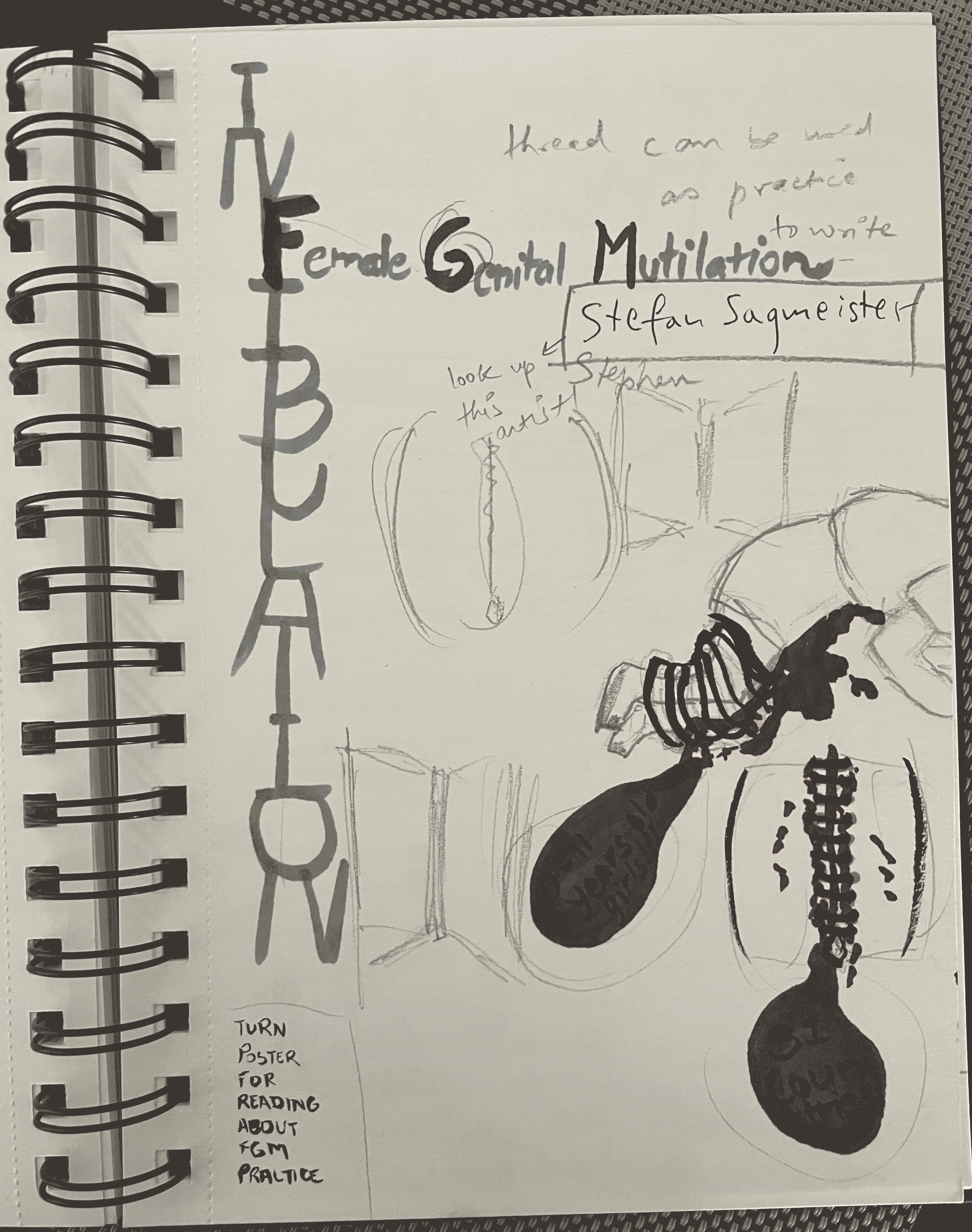A Painful Tradition: The Infibulation Project
In the heart of Design Week, a spark ignited within me. A desire to shed light on the often-hidden plight of women worldwide, particularly the cruel practice of infibulation. This ancient tradition, a barbaric act of female genital mutilation, has scarred countless lives.
To give voice to the voiceless, I embarked on a creative journey. A journey that would culminate in an interactive poster, a poignant testament to the suffering endured by countless girls and women.
To give voice to the voiceless, I embarked on a creative journey. A journey that would culminate in an interactive poster, a poignant testament to the suffering endured by countless girls and women.
Material Used—Fabric to resemble skin, thread to simulate the stitches,
red paint and ink to mirror the blood
Categories—Interactive Poster Design, Poster Design, Social Responsibility, Women's Safety, Human-Centered Design, Socially Responsible Design, Inclusive Design
Project Completion—September 2021
Categories—Interactive Poster Design, Poster Design, Social Responsibility, Women's Safety, Human-Centered Design, Socially Responsible Design, Inclusive Design
Project Completion—September 2021



A Canvas of Suffering
The poster, a stark and unsettling piece, was crafted with meticulous care. Skin-toned fabric, a symbol of vulnerability and innocence, was meticulously sewn shut, mirroring the horrific procedure of infibulation. Crimson ink and threads, like wounds, crisscrossed the surface, a stark reminder of the physical and emotional trauma inflicted.The viewer is invited to interact with the poster, to physically tear open the stitches. This act of defiance, however small, echoes the struggle of women who have been forced to endure this painful ordeal.
A Call to Action
The video displayed on the top showcasing me tearing the poster open, further amplifies the impact of the project. This visual performance, created during the early days of my artistic journey, underscores my commitment to using design as a tool for social change.I am deeply grateful to Piotr Shzhalski, whose guidance and encouragement inspired me to explore this sensitive topic and experiment with innovative techniques. By sharing this project, I hope to spark conversations, raise awareness, and ultimately contribute to the eradication of this harmful practice.

